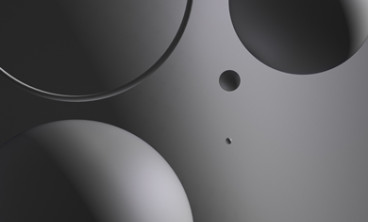
Procedure coding
Coding for treating benign prostatic hyperplasia is well-established in many European countries. The endoscopic transurethral approach is the leading one; in some countries, procedure codes distinguish between the type of energy used for prostatic tissue destruction or removal. For example, in Germany, there are specific OPS codes for transurethral excision and destruction of prostatic tissue, including the following examples: code 5-601.0 "Transurethral excision and destruction of prostate tissue: Electroresection"; code 5-601.30 "Transurethral excision and destruction of prostate tissue: Destruction by heat: Radiofrequency ablation"; code 5-601.42 "Transurethral excision and destruction of prostate tissue: Laser destruction: Laser vaporization"; code 5-601.72 "Transurethral excision and destruction of prostate tissue: Laser excision: Thulium laser enucleation".
New minimally invasive methods of benign prostate hyperplasia treatment can be a subject for the creation of a new procedure coding in the country-specific procedural nomenclatures. For example, in France, two new codes were registered in 2024 under the CCAM sub-chapter 08.03.01.01 "Destruction of the prostate lesion": code JGFE631 "Resection of a benign prostatic hypertrophy by pulsed water jet, with robotic ultrasound programming with urethrocystoscopy guidance" and code JGNE403 "Destruction of a benign prostatic hypertrophy by convection steam, with guidance by urethrocystoscopy".

Payment mechanism
In most European countries, the payment model for the treatment of benign prostatic hyperplasia is DRG. For example, in Italy, there are specific DRGs 337 "Transurethral prostatectomy without complications" with a national tariff of €2,652 for an ordinary stay or 336 "Transurethral prostatectomy with complications" with a national tariff of €3,394 for an ordinary stay in case of complications (the tariffs may differ in Italian regions).
In most European countries, treating benign prostatic hyperplasia does not attract additional (top-up) reimbursement, which is paid in addition to the DRG tariff. One of the exceptions is France, where add-on reimbursement via the List of Reimbursable Products and Services (LPPR) is available for specific medical devices for the treatment of benign prostatic hyperplasia. Energy-based systems (steam-based radiofrequency, aquablation, and photovaporization), embolization materials, and implants for treating benign prostatic hyperplasia are listed as brand-specific categories under the LPPR.
Novel methods of benign prostatic hyperplasia treatment can become a subject of innovative payment schemes. For example, four technologies (UroLift system, GreenLight XPS for cystoscopic photoselective laser vaporization, Rezum for water vapor prostate destruction, and PLASMA electrosurgery system for transurethral resection and hemostasis of the prostate) have been covered by the MedTech Funding Mandate (MTFM) in 2022/23, which supports NICE-approved and cost-saving technologies since 2021. Commissioners and providers must implement technologies included in MTFM.

Policy considerations
As benign prostatic hyperplasia treatment is well-established, it is unlikely to be subject to specific policies from payers or national decision-makers in the countries where such frameworks exist.

Health technology assessment
Novel minimally invasive methods of benign prostatic hyperplasia treatment frequently become a subject of HTA in European countries.
For example, in 2023, the National Institute for Health and Care Excellence (NICE) published interventional procedure guidance on transurethral water jet ablation for lower urinary tract symptoms caused by benign prostatic hyperplasia, which recommended it for use with standard arrangements for clinical governance, consent, and audit due to a lot of good quality evidence that the procedure improves lower urinary tract symptoms caused by benign prostatic hyperplasia. In 2024, NICE selected aquablation robotic therapy for lower urinary tract symptoms caused by benign prostatic hyperplasia as a topic for medical technologies guidance.

Future challenges
Many methods of benign prostatic hyperplasia treatment have established reimbursement and funding in most European countries, so new health technology assessments are unlikely to be relevant. However, novel minimally invasive treatments with distinctive technical features may necessitate the development of new procedure codes and the implementation of tailored reimbursement and funding models. In such cases, obtaining HTA recommendations can be critical to support market access and facilitate clinical adoption.
How can MTRC help?
Development of reimbursement analysis (procedure coding, payment mechanism, reimbursement tariffs, and policy considerations)
Development of market access strategy
Development of the value dossier
Performing evidence gap analysis for novel technologies
Development of reimbursement and HTA submission dossiers
Adaptation of the global health economic model to EU settings
MTRC has experience with more than 9 projects related to benign prostate hyperplasia treatment in Europe
Get in touch
Contact us to discuss your needs and learn about our services



